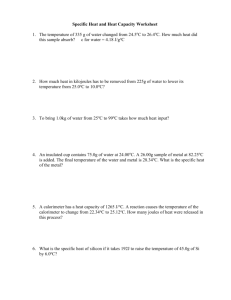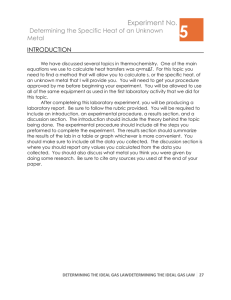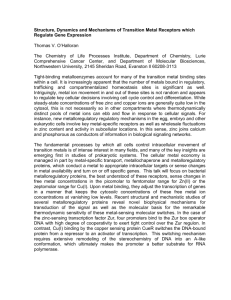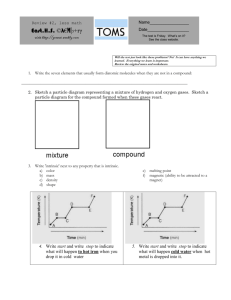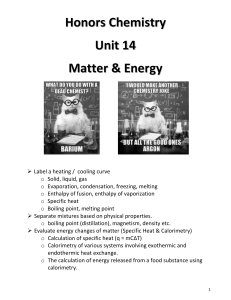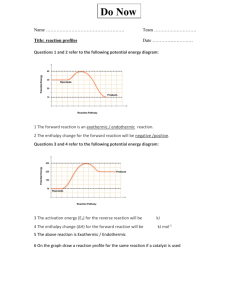answers
advertisement
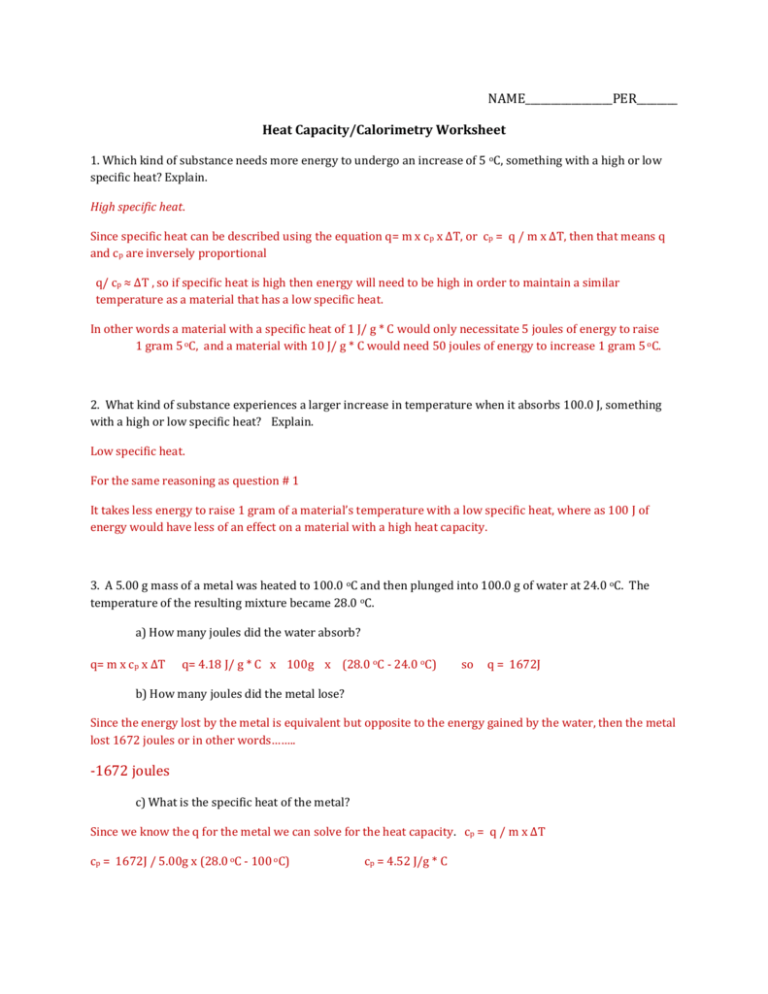
NAME_________________PER________ Heat Capacity/Calorimetry Worksheet 1. Which kind of substance needs more energy to undergo an increase of 5 oC, something with a high or low specific heat? Explain. High specific heat. Since specific heat can be described using the equation q= m x cp x ∆T, or cp = q / m x ∆T, then that means q and cp are inversely proportional q/ cp ≈ ∆T , so if specific heat is high then energy will need to be high in order to maintain a similar temperature as a material that has a low specific heat. In other words a material with a specific heat of 1 J/ g * C would only necessitate 5 joules of energy to raise 1 gram 5 oC, and a material with 10 J/ g * C would need 50 joules of energy to increase 1 gram 5 oC. 2. What kind of substance experiences a larger increase in temperature when it absorbs 100.0 J, something with a high or low specific heat? Explain. Low specific heat. For the same reasoning as question # 1 It takes less energy to raise 1 gram of a material’s temperature with a low specific heat, where as 100 J of energy would have less of an effect on a material with a high heat capacity. 3. A 5.00 g mass of a metal was heated to 100.0 oC and then plunged into 100.0 g of water at 24.0 oC. The temperature of the resulting mixture became 28.0 oC. a) How many joules did the water absorb? q= m x cp x ∆T q= 4.18 J/ g * C x 100g x (28.0 oC - 24.0 oC) so q = 1672J b) How many joules did the metal lose? Since the energy lost by the metal is equivalent but opposite to the energy gained by the water, then the metal lost 1672 joules or in other words…….. -1672 joules c) What is the specific heat of the metal? Since we know the q for the metal we can solve for the heat capacity. cp = q / m x ∆T cp = 1672J / 5.00g x (28.0 oC - 100 oC) cp = 4.52 J/g * C d) What is the heat capacity of the 5.00 g sample? 5.00 g x 4.52 J/g * C = 22.60 J/ oC -1. (heat capacity is the amount of energy to increase the temperature of an object by 1 oC; heat capacity or heat capacity = c x m) 4. An insulated cup contains 75.0g of water at 24.00oC. A 26.00g sample of metal at 82.25oC is added. The final temperature of the water and metal is 28.34oC. What is the specific heat of the metal? The energy absorbed by the water is q= m x cp x ∆T q= 75.0 x 4.18 J/g * C x (28.34 – 24.00) q = 1.36 x 104 J Therefore the energy lost by the object is -1.36 x 104 J So we can solve for the heat capacity of the object cp = q / m x ∆T cp = -1.36 x 104 J / 26.00 x (82.25 oC - 24.00 oC) cp = 0.898 J/g * C 5. A 13.5 g sample of gold is heated, then placed in a calorimeter containing 60.0 g of water. Temperature of water increases from 19.00 oC to 20.00 oC. The specific heat of gold is 0.130 J/goC. What was the initial temperature of the gold metal sample? 6. A 2.50 g sample of zinc is heated, then placed in a calorimeter containing 65.0 g of water. Temperature of water increases from 20.00 oC to 22.50 oC. The specific heat of zinc is 0.390 J/goC. What was the initial temperature of the zinc metal sample?


